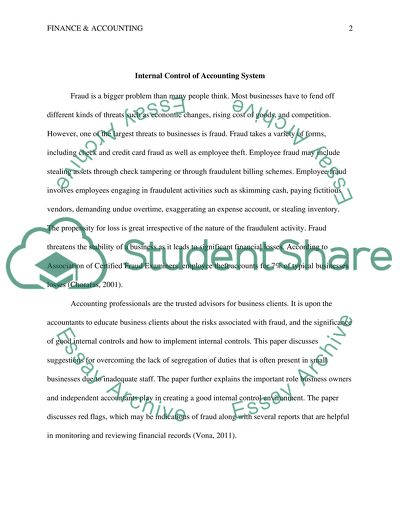Cite this document
(“Internal Control of Accounting System Essay Example | Topics and Well Written Essays - 2000 words”, n.d.)
Internal Control of Accounting System Essay Example | Topics and Well Written Essays - 2000 words. Retrieved from https://studentshare.org/finance-accounting/1667718-control-accounting-fraud
Internal Control of Accounting System Essay Example | Topics and Well Written Essays - 2000 words. Retrieved from https://studentshare.org/finance-accounting/1667718-control-accounting-fraud
(Internal Control of Accounting System Essay Example | Topics and Well Written Essays - 2000 Words)
Internal Control of Accounting System Essay Example | Topics and Well Written Essays - 2000 Words. https://studentshare.org/finance-accounting/1667718-control-accounting-fraud.
Internal Control of Accounting System Essay Example | Topics and Well Written Essays - 2000 Words. https://studentshare.org/finance-accounting/1667718-control-accounting-fraud.
“Internal Control of Accounting System Essay Example | Topics and Well Written Essays - 2000 Words”, n.d. https://studentshare.org/finance-accounting/1667718-control-accounting-fraud.


